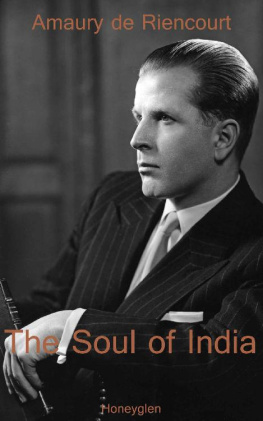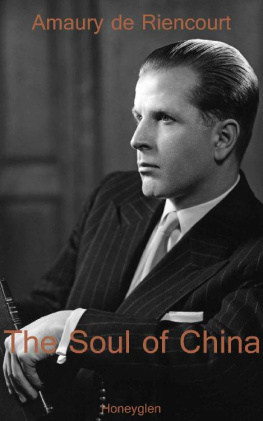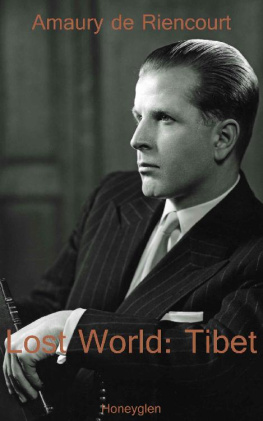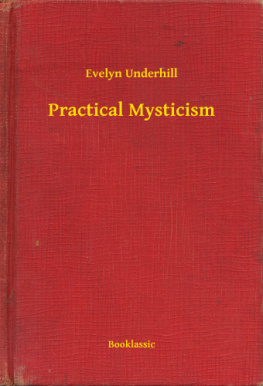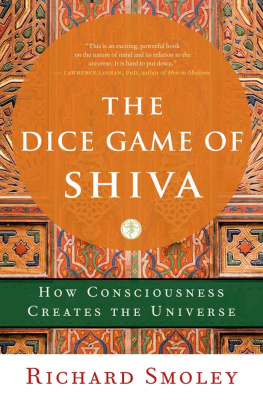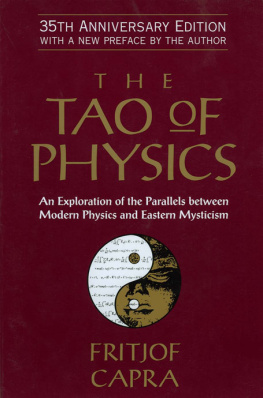THE EYE OF IVA
By the same author
LOST WORLD: TIBET
THE COMING CAESARS
THE SOUL OF CHINA
THE SOUL OF INDIA
THE AMERICAN EMPIRE
WOMAN AND POWER IN HISTORY
A CHILD OF THE CENTURY
AMAURY de RIENCOURT
THE EYE OF IVA
Eastern Mysticism and Science
Honeyglen Publishing Limited
Copyright Amaury de Riencourt 1980
All rights reserved. No part of this publication may be reproduced, stored in a retrieval system, or transmitted, in any form or by any means, electronic, mechanical, photocopying, recording or otherwise, without the prior permission of the copyright owner.
First published 1980 by Souvenir Press (Educational & Academic) Ltd.
43 Great Russell Street, London WC1B 3PA and simultaneously in Canada
British Library Cataloguing in Publication Data
Riencourt, Amaury de
The Eye of Shiva
ISBN 978-0-907855-18-7 MOBI (Amazon Kindle,)
ISBN 978-0-907855-19-4 EPUB (Apple iBook,)
The only channel through which we can have a glimpse of this hidden creation, of this invisible world of consciousness and intelligence, is... the all-seeing Eye of Siva which can penetrate to the hidden levels of existence impervious to normal sight.
Gopi Krishna
Yoga, a Vision of its Future
For my Father
ACKNOWLEDGEMENTS
I am gratefully indebted to the following authors and publishers for permission to reprint material from their works:
Thames and Hudson Ltd., for permission to quote from THE WAY OF ZEN by Alan W. Watts.
Cambridge University Press, for permission to quote from SCIENCE AND CIVILIZATION IN CHINA, vol. 2, by Joseph Needham; and also from PHYSICS AND PHILOSOPHY by James Jeans.
Routledge and Kegan Paul Ltd., for permission to quote from ZEN IN THE ART OF ARCHERY by Eugen Herrigel; Pantheon Books, a division of Random House, for permission to quote from the same work.
Oxford University Press, for permission to quote from SCIENCE AND THE COMMON UNDERSTANDING by J. Robert Oppenheimer.
George Allen and Unwin Ltd., for permission to quote from the following publications: THE AUTOBIOGRAPHY OF BERTRAND RUSSELL by Bertrand Russell; PHYSICS AND BEYOND and PHYSICS AND PHILOSOPHY, both by Werner Heisenberg.
Pandit Gopi Krishna, for permission to quote from his book, KUNDALINI.
CONTENTS
Introduction
At 5.30 on the morning of July 16, 1945, in a desert area known as the Jornada del Muerto at the Alamogordo air base, a stupendous white flash tore apart the sky, dazzling and blinding a small group of scientists ten thousand yards away. The enormously bright ball of fire grew steadily larger as if to wipe out the atmosphere and engulf the world, leading some terrified scientists into believing that they had lost control of mans first nuclear explosion. At this very moment, an apparently incongruous incident took place: Robert Oppenheimer, director of the Los Alamos Scientific Laboratory and prime coordinator of the atomic experiment, began to hum some stanzas he had read years before when he was studying Sanskrit:
divi srya-sahasrasya bhaved yugapad utthit
yadi bh sad s syd bhsas tasya mahtmana
If the radiance of a thousand suns
Were to burst into the sky
That would perhaps be like
The splendour of the Mighty One.
An imaginative description of a possible nuclear explosion? Far from it; in fact, it was a poetic rendering of the explosive nature of mystical ecstasy written thousands of years ago on the banks of the Ganges: the Mighty One, emanation of the Godhead, grants an awestruck Arjuna his first staggering insight into the mysteries of the inner Self.
As the gigantic nuclear cloud mushroomed up to the stratosphere followed by a doomsday roar, Oppenheimer continued with the verses in which the Mighty One reveals Himself:
I am become death
The shatterer of worlds.
Then and there, Oppenheimer symbolized a most extraordinary conjunctionthe juxtaposition of Western civilizations most terrifying scientific achievement with the most dazzling description of the mystical experience given us by the Bhagavad Gt, Indias greatest literary monument.
Ironically, this scientific accomplishment destroyed one of the basic premises that had started Western scientific thinking on its course some twenty-five centuries ago in Greece: the integrity and indivisibility of the atom. In splitting it and releasing its inner energy, Western science did more than devise mans most awesome weapon; it also symbolized the destruction of the psychological assumption on which the Greek philosopher Democritus and, much later, Isaac Newton based their view of the universethe existence of a material, indestructible and eternal atomos as fundamental building block of the material universe.
No one who was alive and conscious in 1945 when nuclear power was at last harnessed could doubt that mankind had reached a historical watershed in terms of technological power. But what few saw was that it was a watershed in more ways than onethat it was also a great divide in mans long religious evolution. Oppenheimers spontaneous conjunction of a Hindu mystical poem with a nuclear explosion was of great symbolic significance. Nowhere in Western literature could he have found an almost clinical description of mystical rapture that also fits the description of a nuclear explosion in the outer world. Could this be mere coincidence, or does it point to some profound convergence of mans inner subjective and outer objective worlds? And does it also point to some hidden convergence of the development of Eastern mystical insight and Western scientific knowledge, concealed behind the apparent divergences?
We are obviously faced here with a triangular problem which is going to be the theme of this work: confronting both Eastern and Western cultures with the philosophic implications of contemporary physics. Clearing away all the dead wood that stands in the wayoutdated myths and outworn ideaswe will reach some tentative conclusions as to the fate of religion in the planetary civilization of the future.
1 SCIENCE AND RELIGION
Our point of departure lies quite naturally in the fact that it is easier today for the thoughtful man to have a spiritual outlook on life than it was a century ago. In an apparent paradox, it is the scientific revolution of our century that makes it possible. There was a time, not so far back, when it seemed that an iron-bound deterministic science was about to establish a complete dominion over man and his environment, when the universe was seen as a cosmic machine functioning according to mathematical equations; the physical world was seen through the lenses of an engineer and the mind was thought to coincide with the brain. All this is now water under the bridge and the contemporary physicist regards the material world in a more mystical though no less exact and practical way, in Arthur Eddingtons words.
Strangely enough, there is also, in what some call this post-Christian world, a profound and rising scepticism regarding the dogmas and theologies of Western creedsalthough mans religious aspirations are greater now than they were two or three generations ago. God is by no means dead, as a recent tradition from Nietzsche to contemporary theologians would have us believe; but the Christian God is shifting from the distant stratospheric Heaven and the Biblical past into mans subjective being. The God of the West is now in the gut, where it has always been in the Eastern tradition. The belief in a beyond in time and space is being metamorphosed into a belief in the deep, timeless here and now. That type of Western man who is a harbinger of spiritual trends no longer projects outwardly but is beginning to look for some ultimate reality within himself, within his unconscious and its deeper layers which often appear to him to plunge right through the material universe.
Next page


